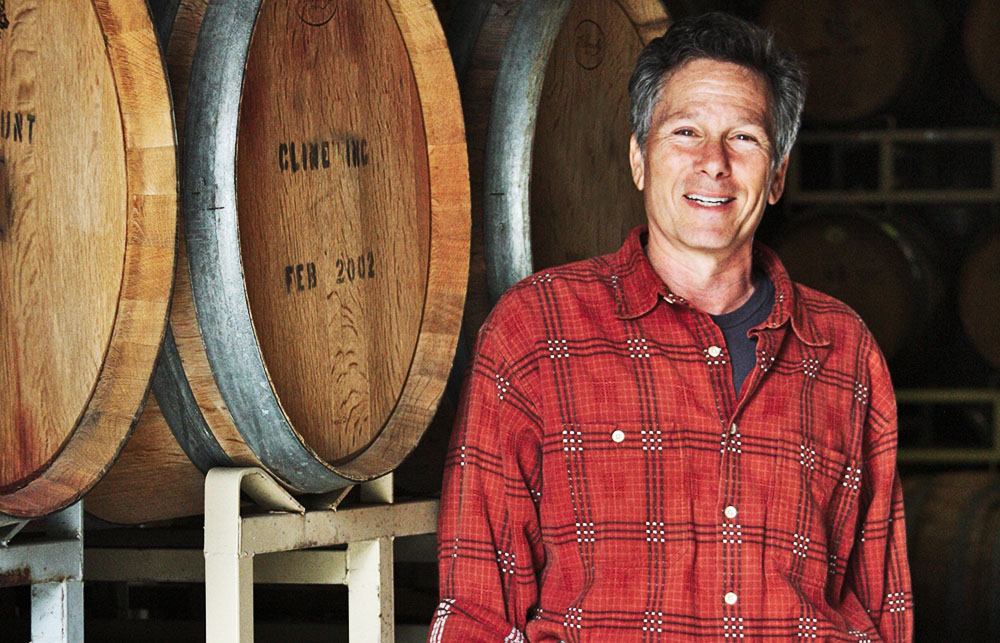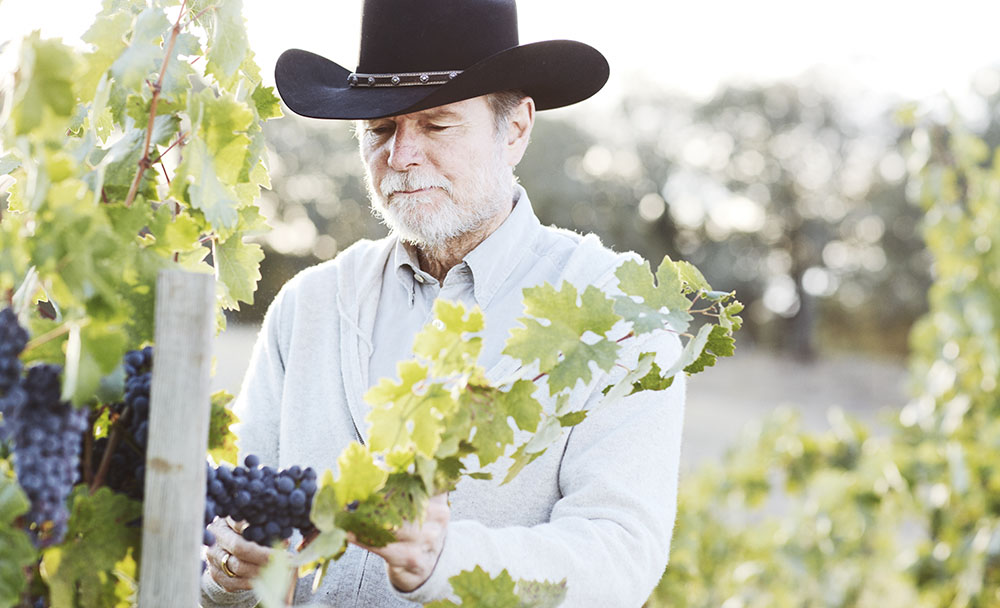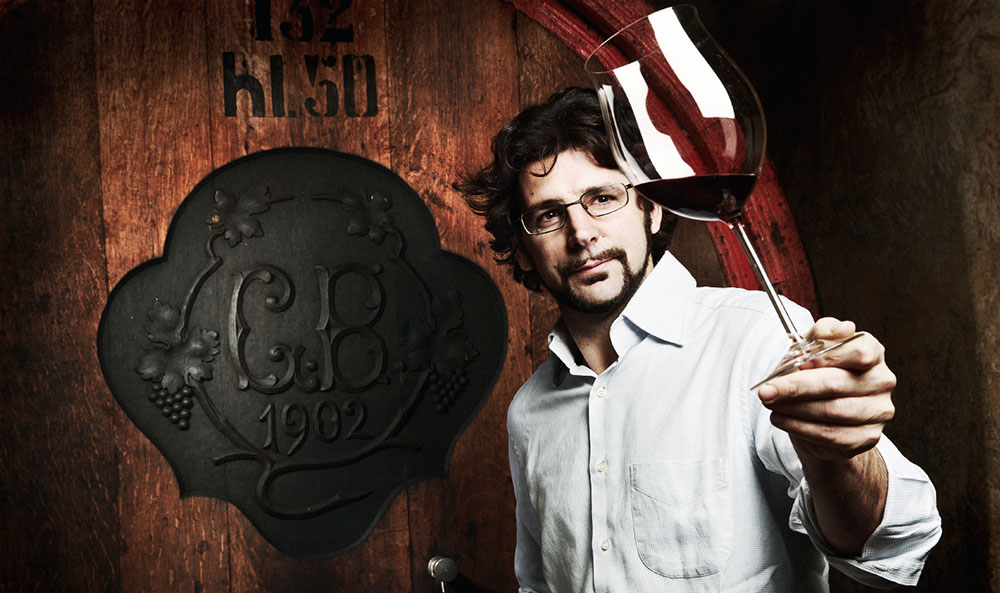Big. It means a lot of different things to a lot of different people. Some swear by it, others loathe it. So, it begs that age-old question: Is bigger really better?
We can ask it in a different way, if you like, just to be perfectly clear here. Are you Burgundy or Bordeaux? BC or Ontario? New Zealand or Australia? California or Oregon
It’s the dilemma people face every time they buy a bottle of red wine: do they prefer full-bodied wines, brimming with ripe fruit, higher alcohol and grippy tannins, or lighter-bodied reds with finesse and flair that are subtler and supple? Chances are you’re either in one camp or the other; there is very little in between.
All the cool kids, guided by today’s youngest and most rigid sommeliers, have been brow-beaten into thinking that anything with a little heft in the glass is for old white guys who prefer brawn over brains, power over grace and, well, just don’t understand the subtle nuances of fine wine.
Big wines, described at eRobertParker.com, as “large-framed, full-bodied … with an intense and concentrated feel on the palate,” hit their apex in the early 2000s, led by the aforementioned Big Wine Guru himself, Robert Parker, but have slowly devolved to where they are today; merely a swearword never again to be uttered in the company of today’s so-called wine aficionados.
But get outside of that insulated circle of vino glitteratis and self-professed tastemakers and there is a whole category of wine lover who likes it big, real big, and they will break down your door to get it. Big is back, baby, and those looking for it are thirstier than ever.
It’s perhaps misleading to say that big is back; the category really never went away, it just percolated merrily along without much attention from modern enthusiasts. Just look at prices for top Napa and Bordeaux wines — they are through the roof. Top Aussie Shiraz and red blends, same thing. Chile, Argentina, Italy, Spain and Portugal … all churning out rich, concentrated red wines with plenty of fans around the globe.
Closer to home, in Niagara, where Pinot Noir, Chardonnay, Gamay, Cabernet Franc and Riesling have been anointed the go-to varieties (more to do with the climate than trends) a recalculation is taking place. Big red wines are emerging from the shadows — and wine lovers are lapping them up.
“I hated Niagara reds,” well-rounded Niagara winemaker Andrzej Lipinski tells Quench. “They weren’t pleasant to drink, too much green pepper. Sorry, they just weren’t good.”
For Lipinski, who arrived in St Catharines in 1989 from Poland without being able to speak a word of English, the pursuit of big red wines has been a 25-year quest and he’s finally hit pay dirt with his new winery Big Head Wines (what else, right?).
With a background in mechanics and light construction, Lipinski stumbled into the wine industry. Working for John Howard (now owner of Megalomaniac winery) at his house in Vineland, Lipinski was offered more work at Vineland Estate when Howard bought the winery in 1992 (and subsequently his controlling interest in 2004). When the famed Carriage House landmark on the property burned down in 1993, Lipinski was hired to restore it. Once that was complete he began working as a cellar hand for Howard and winemaker Brian Schmidt.
Lipinski was a fast learner and made assistant winemaker two years later. By 2002, he was a full-fledged winemaker working at a long succession of jobs around Ontario: Legends, Fielding Estate, Megalomaniac, De Sousa and then Foreign Affair, where he first encountered the appassimento (dried grape) style of winemaking and at long-last a taste of the rich, bold style of wines that he enjoyed drinking.
A light went off, and Lipinski pursued it.
A new winery in Ontario’s emerging South Coast wine region in Norfolk County, Burning Kiln, approached Lipinski to be their winemaker. They wanted to craft wines from dried grapes for further concentration and complexity. On one of Lipinski’s many treks to the winery, he spotted some abandoned tobacco kilns leftover from an industry that was all but dead in the region.
“I saw them, and said ‘wow,’ this is perfect,” he says today. He repurposed the kilns to provide an aerodynamic flow inside the sheds to dry the grapes naturally and concentrate the flavours. All the wines at Burning Kiln, beginning in 2010, had at least some dried grapes in them.
By now, Lipinski was making traditional appassimento wines at Foreign Affair, and kiln-dried grape wines at Organized Crime, Burning Kiln and the new Colenari Winery in Niagara. But it wasn’t enough. Enter: Big Head Wines.
His first wine crafted as a “virtual” winemaker was a kiln-dried Chenin Blanc made at Cornerstone. Big Head has since become a full-fledged winery and retail store operating out of leased space at the Hunter Farms facility in Niagara-on-the-Lake and is churning out a full portfolio of wines counterintuitive to the rest of the region.
Big Head has been packing the house every weekend since it opened last spring and selling wine at an alarming rate. Lipinski’s Big Head Biggest Red 2012 ($49) is a full-on appassimento blend of 30 per cent each of Cabernet Sauvignon, Cabernet Franc and Merlot with 10 per cent Petit Verdot. The scary part? 16.3 per cent alcohol that barely registers on the palate. It sold out almost immediately.
“This was the most difficult red I’ve had to make,” says Lipinski, who now devotes his time to only his own winery and Colenari. “It was on the skins for 42 days and still had 40 grams of sugar left. Normally I like to finish fermentation on the skins. We pressed and put it in Moldavian cigar barrels, and the fermentation took another 15 months to complete. We didn’t know what would happen. It never stopped, just slowly bubbled away. This was a fun wine to make. Many challenges, but worth it in the end.”
It rivals some of the biggest wines ever made in Niagara (at least from what I have tasted) and achieved that by being approachable, even drinkable, in its youth.
The red wine portfolio is pretty much entirely made from kiln-dried grapes in that bigger style that Lipinski is now famous for.
“Younger people want full-bodied wines,” he says. “They want easy-drinking wines with no astringency, wines that are pleasant. And, yes, we are drying the grapes, but it’s an art, and I’m doing it naturally.”
Drying grapes is not the only way to get a big red wine bottled in Niagara, of course. Many established wineries have been making flagship reds in vintages deemed warm enough to warrant it from mostly Bordeaux varieties. Chateau des Charmes has its Equuleus (current vintage 2012), Stratus has the Stratus Red (made every vintage), Hidden Bench has La Brunante (current vintage 2011), Fielding Estate has Chosen Few (current vintage 2012), 13th Street has its Meritage Reserve (current 2012), Southbrook Vineyards has Poetica Red (current vintage 2012), and, of course, the Creekside Broken Press Syrah (current vintage 2012).
But more and more wineries are adding a big red or two to their portfolios by using the appassimento method and finding a willing audience to indulge.
“You can’t craft big, rich, opulent wines consistently every year in Niagara,” says Graham Rennie, owner of Rennie Estate Winery on the Beamsville Bench. “It’s just not going to happen.”
So Rennie found a workaround to achieve his goal of making wines he personally likes to drink and serve his pals.
“I like big red wines. If I was restricted to just Pinot, Gamay and Riesling, I wouldn’t have invested here,” says Rennie, who moved to Niagara from Oakville.
His virtual winery selling wines through Malivoire, turned to the Vineland Research and Innovation Centre to help construct a grape-drying chamber that could replicate the Italian method of drying grapes to give his Bordeaux varieties the complexity, concentration and punch he wanted for his two (now three) biggest reds — the Scarpata (ripasso style), the Rennie G (appassimento) and the just released Super G (full-on appassimento).
“I have this vineyard and everything you’d want for a super grand cru site,” Rennie says. “But how do you take Bordeaux varietals and create a reliable big red wine experience?” For Rennie, it was perfectly clear — dry the grapes: “it just made so much sense.”
His Super G is a 100 percent Cabernet Sauvignon ($100), finished at over 16 percent abv, spends 86 days on drying racks and 21 months in new French oak. It is rich and opulent with sweet spices, graphite and gobs of fruit that shows aging potential of 10, maybe 20 years.
“I have the ability to make what I want, what I like to drink. I do it for my pleasure,” Rennie says.
But the question remains: Is bigger better? It’s a question as old as time.
93 Rennie Vineyards Super G 2013 ($100)
100% appassimento-style, it has a big, rich, opulent nose of cassis, sweet cedar and spice, graphite, blackberries and Cuban cigar leaf. This is all about concentration of flavours on the palate with anise, blackberries, plums and cherries to go with a full spectrum of spices, chocolate, liquorice and a mouthful of tannins that are grippy and need time to resolve.
92 Colaneri Coraggioso Amaroso 2012 ($50)
Made with 100% Cabernet Sauvignon with 100% appassimento grapes. It has a sweet, ripe barrage of fruit on the nose including cassis, cherries, figs and plums with bramble, cigar leaf, nutmeg, clove, graphite and all spice. It’s ripe, meaty and spice-laden on the palate with glowing and vibrant dark fruits, kirsch, chocolate, and sweet tannins.
93 Colaneri Insieme 2012 ($35)
A blend of 36% Cabernet Sauvignon, 36% Cabernet Franc, 14% Syrah and 14% Merlot with 100% of the fruit kiln-dried. It has a rich and fulsome nose of black cherry, raspberry, plum, blueberry, ripe blackberry, vanilla and full range of barrel spices. It’s rich, layered and textured in the mouth with melt-in-your-mouth tannins to go with a range of red and dark fruits.
91 Big Head Bigger Red 2013 ($38)
The blend is 45% Merlot, 22.5% Petit Verdot and Cabernet Sauvignon (both full appassimento) and 10% Cabernet Franc. The nose shows rich black cherry, kirsch, cassis and an array of attractive oak spices. On the palate, it’s rich, spicy and smoky with sweet tannins, plums, concentrated cherry, currants and liquorice.
93 Foreign Affair Temptress 2012 ($45)
It’s a blend of 54% Cabernet Franc, 28% Cabernet Sauvignon, 11% Merlot and 7% Petit Verdot with 35% of the grapes dried. The nose is expressive with notes of sweet cigar box, spice box, concentrated blackberry, currants, blueberry and sweet herbs that just don’t quit. Such power on the palate with super-charged blackcurrants, anise, blueberry pie, cocoa, liquorice and spice box all propped up by a wall of firm, ripe tannins.
93 Rennie Estate G 2013 ($55)
An appassimento-style blend of Merlot, Cabernet Sauvignon and Cabernet Franc that’s dried for up to 106 days. The nose reveals rich cherry pie, raspberry compote, crushed blackcurrants, graphite, forest floor, kirsch, dried herbs, bramble and toasted oak spices. It’s unfair to drink this now, with that mass of ripe, firm tannins, but underneath there is a range of saturated and highly extracted red and dark fruits to go with expressive vanilla-nutmeg-caramel spices, anise/liquorice notes and earth.
93 Fielding Estate Chosen Few 2012 ($60)
The 2012 version is a blend of Cabernet Franc (38%), Syrah (37%) and Cabernet Sauvignon (25%). The nose shows layers of blackcurrants, black cherry-kirsch, baking spices, toasted oak nuances and cracked black pepper notes. It’s youthful on the palate but jam-packed with blackcurrants, blackberries, lavish barrel oak spices, and peppery spices.
92 13th Street Meritage Reserve 2012 ($35)
This meritage, a third each of Cabernet Sauvignon, Cabernet Franc and Merlot, is unabashedly bold on the nose with concentrated blackcurrants, blackberry and cherry/kirsch notes followed by lavish barrel spice and violets that is altogether (to coin a phrase from the The Who) Meaty Beaty Big and Bouncy. This is a mouth-filling wine that’s highly extracted on the palate with a mass of tannins, thick, layered fruits and defining spice notes.
93 Creekside Unbroken Press Syrah 2012 ($43)
The “Un” in the Unbroken means no Viognier added. The nose shows blackcurrants, smoke, sweet cedar, grilled meats, kirsch, pepper and a lifted floral note. It’s weighty and bold on the palate with integrated fruit, bramble and rousing spices to go with firm, overt tannins.
93 Southbrook Vineyards Poetica Red 2012 ($55)
This is a blend of Cab Sauv (46%), Cab Franc (26.5%), Petit Verdot (26.5%) and a touch of Merlot. Such a wonderful and expressive nose of rich, meaty blackberry, cherry and a complex array of oak spices. This has structure and grip with lovely red and dark fruits that build on the palate and meld with an array of spices and firm tannins.
93 Trius Showcase Red Shale Cabernet Franc Clark Farm Vineyard 2012 ($45)
An enthralling Cab Franc with a deep, rich nose of fragrant red fruits, raspberry bush, earth, light spice and a lifted floral-herbal note. It shows succulent red fruits on the palate, chewy tannins, roasted Espresso beans, earthy-savoury notes and integrated spice with bits of anise and liquorice.
94 Stratus Red 2012 ($44)
This is a blend of 29% Cabernet Sauvignon, 26% Merlot, 26% Cabernet Franc, 13% Petit Verdot, 3% Malbec, and 3% Tannat. The nose shows dense and highly aromatic blackcurrants, blackberries, plums, cassis and then oak spices, clove-cinnamon notes and charred vanilla toast. It is so lush, so persistent on the palate, yet it is defined by the richness and purity of the dark layered fruit that is bolstered by lavish spice, grippy tannins and a finessed feel through a long, velvety finish.
93 Chateau des Charmes Equuleus 2012, Niagara ($40)
The flagship red from this estate is always a blend of 50% Cabernet Sauvignon and 25% of both Cabernet Franc and Merlot. The nose shows rich cherry, a touch of raspberry and then lavish cassis, concentrated blackcurrants and fine oak spices. It is smooth on the palate with generous fruit flavours, fine tannins and integrated spices that echo on the long finish.



